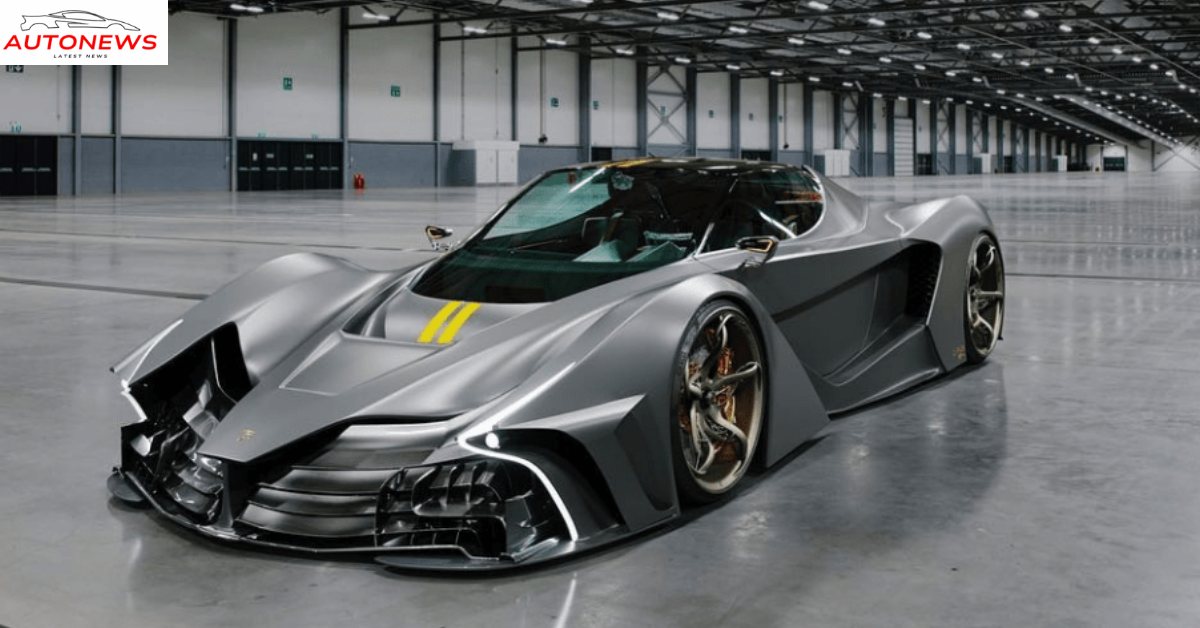SP Automotive, an ambitious new name in the world of hypercars, has made waves in the automotive industry with its bold claims, eye-catching designs, and a bold ambition to shake up the hypercar market. But along with all the glitz and glamour, the brand has also been involved in some controversies, challenges, and even chaos that have left automotive enthusiasts and investors scratching their heads. In this blog, we’ll take a closer look at the rise, fall, and turbulence of SP Automotive, examining how it went from promising disruptor to the center of a chaotic storm.
The Birth of SP Automotive
SP Automotive was founded by Spyros Panopoulos, a Greek entrepreneur with a background in car tuning and a passion for engineering excellence. The company made its debut with the unveiling of its flagship vehicle, the Chaos, in 2021. SP Automotive’s mission was clear: to create the world’s most extreme hypercar, one that would outperform anything on the market, including the likes of Bugatti, Koenigsegg, and McLaren. And, to be fair, the Chaos certainly caught attention.
The specifications of the Chaos were nothing short of jaw-dropping. With a top speed claimed to be over 500 km/h (310 mph), it promised to obliterate existing performance records. The car was said to have a mind-blowing 3,000 horsepower, courtesy of a 4.0-liter twin-turbo V10 engine paired with electric motors, giving it instant torque and absurd acceleration figures. The car also boasted a carbon-fiber body, advanced aerodynamics, and cutting-edge technology designed to make it not just a high-performance machine, but a futuristic marvel.
The Trouble Begins
While the specifications were enough to make any hypercar enthusiast salivate, things quickly started to get messy. SP Automotive’s rapid rise in the automotive world was marred by several controversial moments, and it didn’t take long for cracks in the company’s ambitious foundation to appear.
1. Questionable Claims
Perhaps the biggest red flag surrounding the brand was its bold and often unverifiable claims. The car’s performance figures, particularly its 500+ km/h top speed and 3,000 horsepower output, were met with skepticism. Despite the impressive technology on paper, no one had actually seen the car perform these feats in real-world conditions. The lack of concrete, verifiable testing left many wondering if the company had exaggerated the capabilities of its vehicle to generate hype.
What made matters worse was the lack of transparency regarding the development process. SP Automotive showed off high-end renderings, but there was little to no information on the car’s actual testing, prototypes, or production timeline. In the hypercar world, transparency and credibility are key, and SP Automotive’s early days left many in the industry raising eyebrows.
2. Manufacturing Delays and Setbacks
Building a hypercar from scratch is no easy feat, and SP Automotive quickly found that creating a production-ready model wasn’t as simple as just slapping together some cutting-edge components. The company faced significant delays in manufacturing, and rumors began circulating about potential issues with its suppliers and engineering partners. The first prototype, which was supposed to be unveiled in 2022, remained elusive, further adding to the chaos.
The Fallout
As 2023 came around, SP Automotive’s initial hype began to turn into something far more negative. The company was faced with increasing criticism from the media and potential buyers, as it struggled to meet its promises. Investors were left wondering whether SP Automotive could deliver on its high aspirations, and the brand’s reputation began to suffer. There was also a growing suspicion that the company had overstated its capabilities, with some even accusing Panopoulos of trying to pull off a classic “vapourware” scenario—promising the world but failing to deliver anything.
3. Legal Troubles and Allegations
Along with manufacturing struggles, SP Automotive also found itself in legal hot water. Allegations of financial mismanagement and disputes with suppliers began to surface. It became clear that the company was not just facing production difficulties, but also internal turmoil. Some industry insiders suggested that Panopoulos may have bitten off more than he could chew, and the financial backing needed to sustain the ambitious project was not as stable as initially projected.
One particularly contentious point was the marketing of the Chaos. In some of its promotional videos and materials, the company was accused of using computer-generated imagery (CGI) to depict the car in action, leading some to accuse SP Automotive of misrepresenting their product. These allegations further tarnished the brand’s credibility, making potential buyers and automotive fans skeptical about what they were actually going to receive.
What’s Next for SP Automotive?
As of 2025, SP Automotive is still in operation, though the future of the company remains uncertain. While there are still some loyal supporters who believe in Panopoulos’ vision and the potential of the Chaos, there are also plenty of critics who view the company as another example of overhyped ambition crashing into the realities of high-level manufacturing.
The company has made some moves to reassert itself in the market, focusing on smaller, more achievable goals such as limited-edition luxury vehicles that take some of the Chaos’ technology without the wild promises. Whether or not SP Automotive can recover from its turbulent start is still up in the air.
Conclusion
SP Automotive’s journey is a cautionary tale about the dangers of over-promising in an industry where results matter above all else. The Chaos, a vehicle that was once the shining symbol of the brand’s ambition, has become a symbol of both innovation and chaos—a reminder that no matter how bold the vision, the execution is what truly defines a company’s legacy. Whether SP Automotive can steer its way out of the chaos it has created or if it will fade into obscurity remains to be seen, but one thing is for sure: it will be a story worth following.

